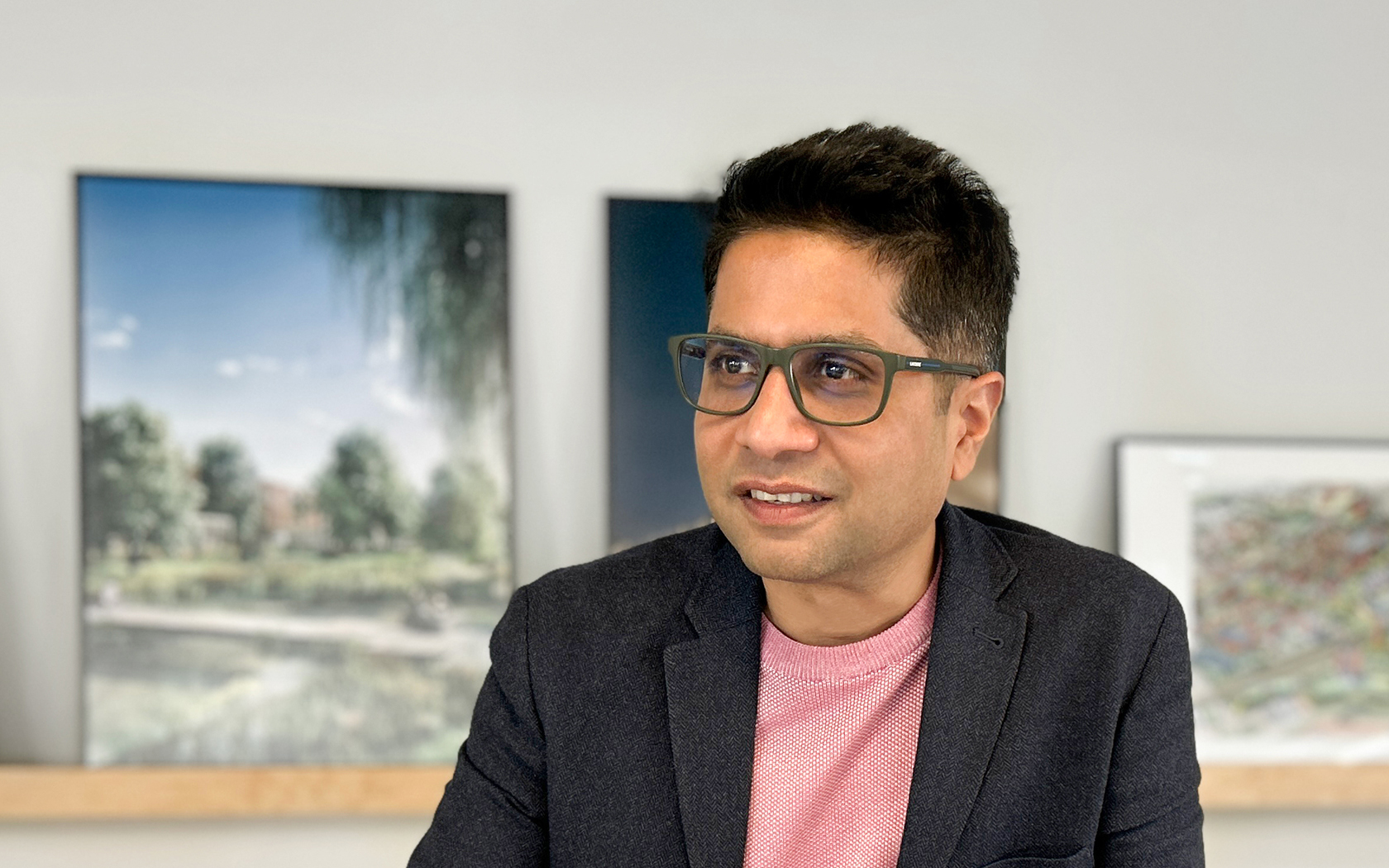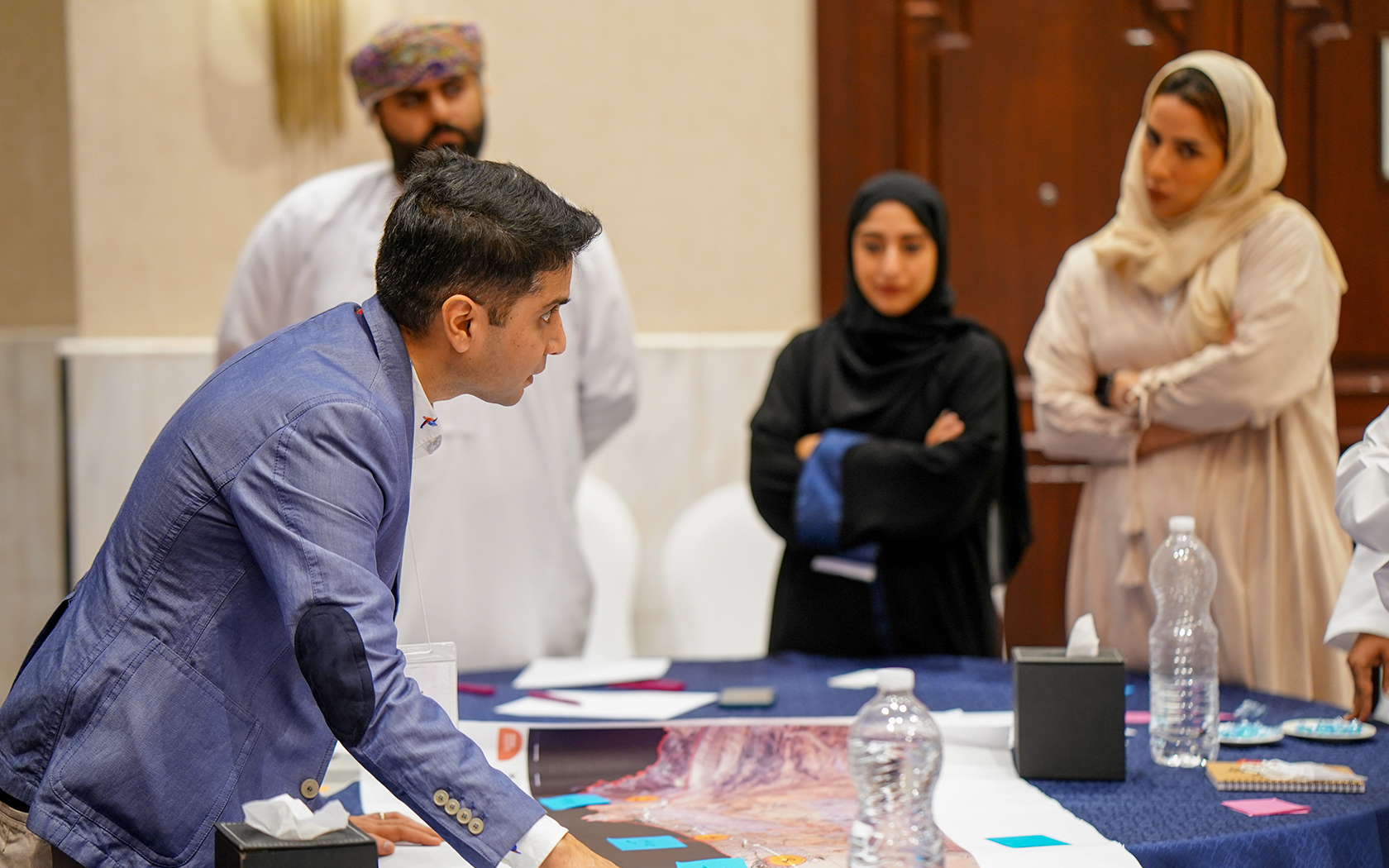In this interview, Ash shares his journey at Broadway Malyan, offering advice for those considering a career in masterplanning, and discussing how engaging with diverse stakeholders and local communities shapes meaningful spaces.

In this interview, Ash shares his journey at Broadway Malyan, offering advice for those considering a career in masterplanning, and discussing how engaging with diverse stakeholders and local communities shapes meaningful spaces.

I am a masterplanner and qualified architect and have been with Broadway Malyan for almost eleven years. When I first joined, we were expecting our twins—who are now ten! In many ways, their growth mirrors my journey within the business.
I began my career as an urban designer in Broadway Malyan’s Weybridge studio, focusing on UK projects. Over the years, my work and interests have taken me to our Mumbai and Singapore studios before eventually returning to London, progressing from Associate to Director of Masterplanning. That’s the beauty of Broadway Malyan—it offers opportunities to work on diverse projects and in different locations, shaping my entrepreneurial spirit and personal growth.
I grew up in a close-knit community in India, where a central square was surrounded by homes, and everyone knew each other. That spirit of connection always fascinated me, sparking my curiosity about how to create the same warmth and belonging in different places.
Drawing was my strength in school, and being inquisitive, my parents encouraged me to pursue Architecture as my formal education, eventually becoming a qualified Architect. However, while training, my passion for communities led me to travel and explore, ultimately inspiring my shift toward urban design and Masterplanning.
Masterplanning and urban design are established terms, each with different scales. Masterplanning shapes the broader structure and its evolution, while urban design focuses on spaces beyond buildings—how streets connect to homes and how people interact with their environment.
Urban design in the UK differs significantly from approaches in India, China, Indonesia, and the Middle East. Each community has its unique cultural nuances that must be considered to create spaces that truly resonate with local people. Understanding these differences is essential to shaping meaningful and effective designs.
The core philosophy of urban design is that it’s not just about the space inside your four walls—everything outside them matters too. This aspect has long been overlooked, yet it is essential for creating environments that foster community and connectivity. In many of the countries I’ve worked in, people often don’t pay much attention to what’s next door, which is where urban design can play a transformative role in bringing individuals together.
Urban design allows us to create beautiful places with a true sense of identity and consistency. Without it, we risk creating something like Disneyland—lacking authenticity and connection. The beauty of masterplanning lies in setting the framework and roadmap, enabling more focused, detailed interventions through urban design to ensure every element contributes to a cohesive, meaningful place.

Understanding cultural differences broadens our approach to design, allowing us to create solutions that truly resonate with the communities we serve. For example, in the UK, the back garden is a sacred space, while in the Middle East, smaller areas for ancillary uses or a pool may be more valued. Embracing these diverse perspectives enriches our work and helps us create spaces that meet the unique needs of their users.
When we conducted a workshop in Oman, we suggested creating a beautiful park. However, one lady shared that her favourite place to exercise was the mall. She walks around it ten times a day, which was fascinating to me. In that environment, cycling isn’t feasible due to the traditional dress code, so walking in an air-conditioned atmosphere becomes the most comfortable and practical option. These insights help us design spaces that are shaded and truly meet the needs of local communities.
Our interactions with local communities reveal important insights. It’s not just about placing a large green space in a desert, which raises concerns like irrigation, but about gathering feedback that helps create bespoke solutions reflecting the community’s needs and values. Understanding what motivates locals—their "tipping point"—is key to designing spaces that resonate with the people who will use them.
We engage with diverse stakeholders, from individuals and government agencies to community groups. In the UK, there are many NIMBYs—the first group I encountered in my career. Understanding their concerns and finding common ground has been key to my work in urban design and masterplanning.
I remember running a workshop in the middle of nowhere at a greenfield land development. The crowd was so angry they staged a protest with a fake Lady Godiva on horseback, and our car tyres were slashed. It was a vivid moment of the "UK experience," highlighting the intense emotions and resistance that can arise in these settings.
In the Middle East, engagement takes a different form—it’s often about breaking down silos. Workshop participants may sit side by side yet remain unacquainted. To bridge this gap, we use simple tactics and tools to break the ice, fostering open discussions where issues are openly addressed and resolved together. Engagement varies globally, adapting to local dynamics and cultural norms.
The fundamental question for every stakeholder is, "What’s in it for me?" Effective engagement requires understanding their perspective and benefits. It’s a tailored process, shaped by culture, context, geography, and interactions. In Africa, we held open on-site workshops, bringing together actual bus rapid transit (BRT) users to gain firsthand insights and better address their needs.
Many people approached us with diverse perspectives, from safety to pricing concerns. Often, they looked to us for solutions, creating a need for careful balance. In these situations, we focused on building trust and understanding, positioning ourselves as partners rather than opponents. The goal was to foster a collaborative approach that resonated with each community we engaged with.
Explore the world—immerse yourself in different cultures, observe how people interact, and embrace new perspectives. You’ll gain far more from these experiences than from any qualification alone.
Schools and qualifications provide the foundation to enter the industry, but real learning comes from experiencing people, cultures, and traditions firsthand. That’s where true understanding lies. I often tell people that masterplanning takes you to places you never imagined—it’s a journey of constant discovery.
I never imagined I would be working in places like Africa, Oman, or Saudi Arabia. That’s the beauty of it—masterplanning takes you to unexpected places, and that’s what I find most fascinating.